The NVIDIA GeForce RTX 2070 Super & RTX 2060 Super Review: Smaller Numbers, Bigger Performance
by Ryan Smith on July 2, 2019 9:00 AM EST- Posted in
- GPUs
- GeForce
- NVIDIA
- Turing
- GeForce RTX
Meet the GeForce RTX 2070 Super & RTX 2060 Super
Taking a closer look at the RTX 2070 Super & RTX 2060 Super Founders Edition cards, there aren’t too many surprises to be found. Since we’re dealing with a mid-generation kicker here, NVIDIA has opted to stick with their original RTX 20 series reference designs for the new cards, rather than design wholly new boards. This has allowed them to get the new cards out relatively quickly, and to be honest there’s not a whole lot NVIDIA could do here that wouldn’t be superficial. As a result, the RTX 2070 Super and RTX 2060 Super are more or less identical to the RTX 2080 and RTX 2060 respectively.
| GeForce RTX 20 Series Card Compariaon | ||||||
| RTX 2070 Super Founders Edition |
RTX 2070 Super (Reference Specs) |
RTX 2060 Super Founders Edition |
RTX 2060 Super (Reference Specs) |
|||
| Base Clock | 1605MHz | 1605MHz | 1470MHz | 1470MHz | ||
| Boost Clock | 1770MHz | 1770MHz | 1650MHz | 1650MHz | ||
| Memory Clock | 14Gbps GDDR6 | 14Gbps GDDR6 | 14Gbps GDDR6 | 14Gbps GDDR6 | ||
| VRAM | 8GB | 8GB | 8GB | 8GB | ||
| TDP | 215W | 215W | 175W | 175W | ||
| Length | 10.5-inches | N/A | 9.0-inches | N/A | ||
| Width | Dual Slot | N/A | Dual Slot | N/A | ||
| Cooler Type | Open Air (2x Axial Fans) |
N/A | Open Air (2x Axial Fans) |
N/A | ||
| Price | $499 | $499 | $399 | $399 | ||
As I noted earlier, the Founders Edition cards themselves are now purely reference cards. NVIDIA isn’t doing factory overclocks this time around – the high reference clock speeds making that process a bit harder – so these cards are very straightforward examples of what the RTX 2070 Super and RTX 2060 Super can deliver in terms of performance. It also means that these cards no longer carry a price premium, with NVIDIA selling them at the $499 and $399 MSRPs respectively.
Starting with the RTX 2070 Super then, possibly the only material change is quite literally in the materials. NVIDIA has taken the 2080 reference design and given the center segment of shroud a reflective coating. This, along with the Super branding, are the only two visually distinctive changes from the RTX 2080 reference design. For better or worse, the reflective section is every bit the fingerprint magnet that you probably expect, so thankfully most people aren’t handling their video cards as much as hardware reviewers are.
In terms of cooling then, this means the RTX 2070 Super gets the RTX 2080’s cooler as well. At a high level this is a dual axial open air cooler, with NVIDIA sticking to this design after first introducing it last year. The open air cooler helps NVIDIA keep their load noise levels down, though idle noise levels on all of the RTX 20 series reference cards has been mediocre, and the new Super cards are no different. The fact that this reference design isn’t a blower means that the RTX 2070 Super isn’t fully self-exhausting, relying on the computer chassis itself to help move hot air away from the card. For most builders this isn’t an issue, but if you’re building a compact system or a system with limited airflow, you’ll want to make sure your system can handle the heat from a 215W video card.
Under the hood, the RTX 2070 Super inherits the RTX 2080’s heatsink design, with a large aluminum heatsink running the full length of the card. Deeper still, the heatsink is connected to the TU104 GPU with a vapor chamber, to help move heat away from the GPU more efficiently. Overall the RTX 2070 Super has the same 215W TDP as the RTX 2080, so it behaves virtually identically to the latter card. Which is to say that it has no problem keeping its cool.
Since this card is needed for further testing I haven’t shucked the card down to its PCB, but according to NVIDIA the power delivery system is also identical to the RTX 2080. In this respective NVIDIA’s reference designs are solid, and while they won’t be enough for hardcore overclockers, it’s more than sufficient for the kind of overclocking that can be done with the reference cooler. Of particular note, the maximum power target for the card is +20%, which means it can have its TDP increased to 258W. Accordingly, the card is fed by the same 6pin + 8pin power system as on the RTX 2080, more than guaranteeing the card can be fed up to its power target limit.
Finally, for display I/O, the card gets the continuing NVIDIA high-end standard of 3x DisplayPort 1.4, 1x HDMI 2.0b, and 1x VirtualLink port (DP video + USB data + 30W USB power).
GeForce RTX 2060 Super
Shifting gears, for building the RTX 2060 Super NVIDIA has gone the opposite direction, using the RTX 2060 reference design as the base. The 2060 itself wasn’t all that different from the 2080 – and the same holds for its Super variant – but there are a few notable distinctions from the newly minted RTX 2070 Super.
In terms of overall design, the RTX 2060 Super Founders Edition card retains the same design aesthetic – reflective bits and all – but it comes in a smaller package. Overall the card is just 9 inches long, which is 1.5 inches shorter than the RTX 2070 Super. The cooling system has also been simplified a bit – mostly forgoing the vapor chamber – though it still retains the card’s full-body heatsink and dual fan open air cooler.
With a 175W TDP, the card relies on a single 8pin PCIe power connection at the rear of the card for the extra power it needs. Overclockers meanwhile will be able to pump up the power target by 22%, allowing the card’s TDP to be raised to a maximum of 213W.
Outside of its smaller stature, the other big departure for the RTX 2060 Super from its more powerful sibling is in the display I/O configuration. As with the regular RTX 2060, the Super card drops the 3rd DisplayPort for a DL-DVI-D port, giving the card a final tally of 2x DisplayPort 1.4, 1x HDMI 2.0b, 1x DL-DVI-D, and a sole VirtualLink port.


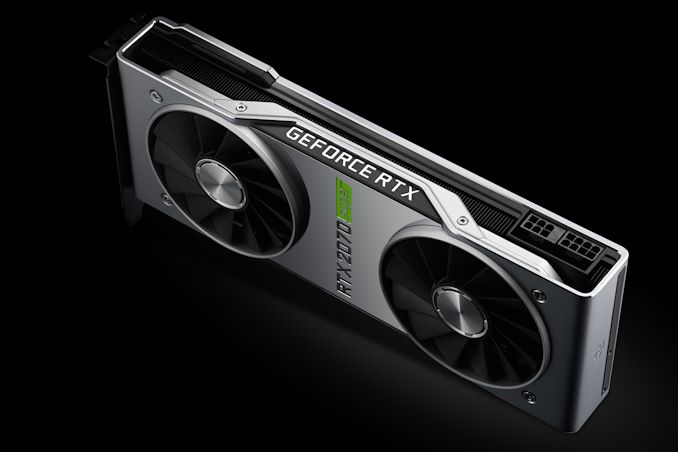
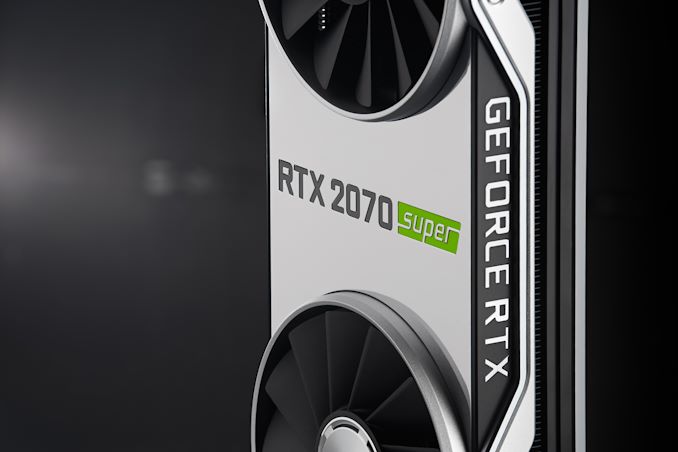
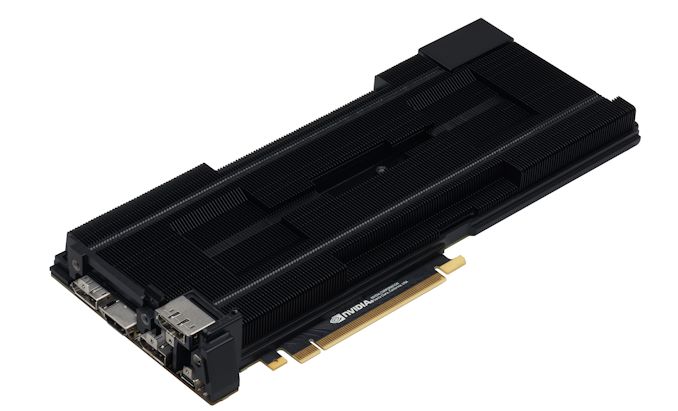

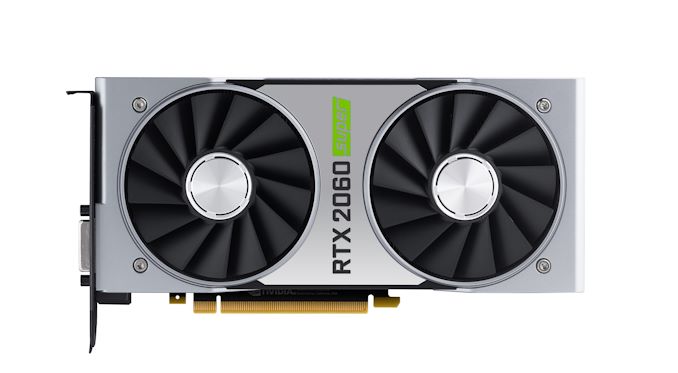
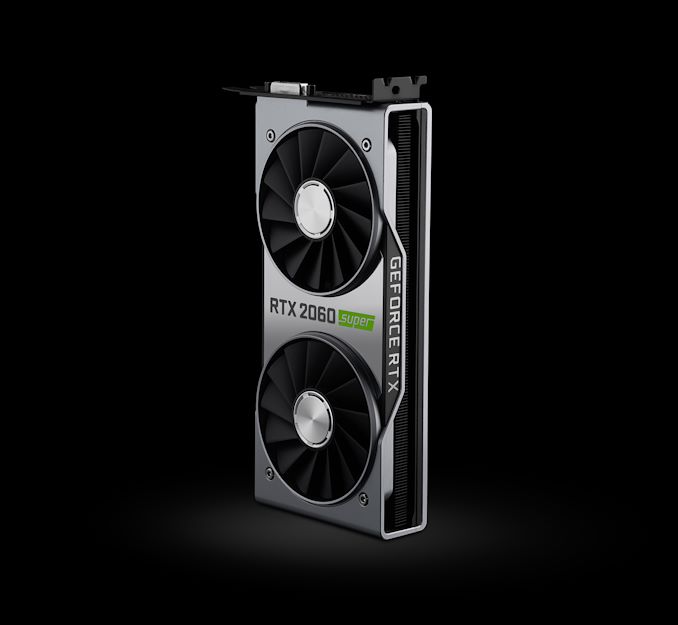









281 Comments
View All Comments
Haawser - Wednesday, July 3, 2019 - link
$450-500 for mid range cards ? Think I'll buy a $250 second hand Vega 56, undervolt it, and play quite happily at 1440p. Maybe at high instead of ultra, but for $250 I can live with that.Gunbuster - Friday, July 5, 2019 - link
PowerColor AMD Radeon Vega 56 RED Dragon is $300 on amazon. $250 if you have an Amex with points and got the targeted 20% off discount.Gastec - Wednesday, July 17, 2019 - link
They are actually $100 more from partners.catavalon21 - Wednesday, July 3, 2019 - link
TH shows the 2060 Super outperforming the GTX 1080 in a dozen or so benchmarks at 1440. Only one test went in favor of the 1080.https://www.tomshardware.com/reviews/nvidia-geforc...
V900 - Thursday, July 4, 2019 - link
Actually, the 2060S isn’t just faster than the 1070 or 1070TI, it also beats the 1080 in most games/benchmarks.And that’s just in terms of performance. Without including the features like RTX and DLSS that the 10XX series lack.
It’s a pretty solid upgrade for a few hundred dollars.
YouInspireMe - Wednesday, July 3, 2019 - link
Wait! They just announced the 2080 super DUPER for $698.zodiacfml - Thursday, July 4, 2019 - link
There is nothing in exciting in 2019 video cards unless AMD will introduce massive price cuts considering the small die size of the chips in the RX 5700none12345 - Thursday, July 4, 2019 - link
2060 super is worse value then a 2060 was(fps/$), value went down not up. It only looks like it went up when you compared it to the extremely poor value 2070.2070 super is better value then the only 2070, same price but higher performance. But, yet again the old 2070 was crap value, so ya its better....but its still not good.
Compared to the cards from 3.5 years ago, the 20 series super cards are still rather poor value. We should have had much more performance for the same $s by now.
UltraLeader - Thursday, July 4, 2019 - link
nVidia's problem is 4K performance issue. Every two years period nVidia need to provide new cards that faster two name cards. For example, GTX 980Ti = GTX 1070. GTX 1080Ti = RTX 2070. Definitely RTX 2070 is much much slower than 1080Ti. That means nVidia hugely reduced their GPU speed (reduced CUDA cores). No one really care about ray tracing if it can not run 4K 60+ FPS. GTX 10 series to RTX Super is 3 years long !!! But 2070 Super still slower than 1080Ti !!! and 2080 Super should be same price as GTX1080 ($499~$559) not $699 !!! $699 is for 2080Ti. Even now 2080Ti still extremely overpriced ($1249) no even close MSRP $999. and 2080Ti is one year old already. so price should be $599 !!! and nVidia should release 2080Ti Super for $699. and old card like 2060 should price $199. 2070 = $299. 2080 = $459. 2080Ti = $599. and new crap card should only add $50 only. so 2060 Super = $249. 2070 Super = $349. 2080 Super = $499. 2080Ti Super = $749.UltraLeader - Thursday, July 4, 2019 - link
For 3 years waiting. nVidia should release graphic card run 4K 120~180FPS on 2080Ti Super not 4K 60 FPS !!!